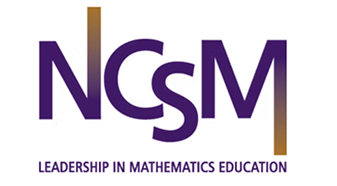Measures of spread
Examine dataset variability by applying measures of spread to identify and quantify outliers.
K–2 Competencies
Describe the upper and lower bounds of a set of objects. e.g., tallest and shortest, biggest and smallest
Classroom resources
Data Science Starter Kit Module 3: Making Sense of Data - Analysis and Modeling
Welcome to the exciting part of data science—making sense of the information you’ve collected! This module focuses on how to analyze data to find patterns, understand what the numbers really mean, and start drawing conclusions.🔗
Analysis and Modeling isn’t about complex mathematics or advanced statistics. It’s about developing the thinking skills to look at data and ask, “What story is this telling me? What patterns do I notice? What questions does this raise?” Whether students are working with simple tally marks or sophisticated datasets, the fundamental thinking is the same.
3–5 Competencies
Calculate the range for numerical data.
Classroom resources
Data Science Starter Kit Module 3: Making Sense of Data - Analysis and Modeling
Welcome to the exciting part of data science—making sense of the information you’ve collected! This module focuses on how to analyze data to find patterns, understand what the numbers really mean, and start drawing conclusions.🔗
Analysis and Modeling isn’t about complex mathematics or advanced statistics. It’s about developing the thinking skills to look at data and ask, “What story is this telling me? What patterns do I notice? What questions does this raise?” Whether students are working with simple tally marks or sophisticated datasets, the fundamental thinking is the same.
6–8 Competencies
Categorically identify the presence of potential outliers in a dataset.
Classroom resources
Data Science Starter Kit Module 3: Making Sense of Data - Analysis and Modeling
Welcome to the exciting part of data science—making sense of the information you’ve collected! This module focuses on how to analyze data to find patterns, understand what the numbers really mean, and start drawing conclusions.🔗
Analysis and Modeling isn’t about complex mathematics or advanced statistics. It’s about developing the thinking skills to look at data and ask, “What story is this telling me? What patterns do I notice? What questions does this raise?” Whether students are working with simple tally marks or sophisticated datasets, the fundamental thinking is the same.
9–10 Competencies
Calculate standard deviation from mean or interquartile range.
Use standard deviation as a measure of variability and a modified boxplot for identifying outliers.
Classroom resources
Is Simone Biles the GOAT? by DataClassroom
The purpose of this lesson is to help students apply advanced statistical concepts including data standardization, correlation analysis, and comparative modeling to evaluate claims about athletic performance across different time periods. Students will learn to use z-scores and statistical inference to make fair comparisons when raw data cannot be directly compared due to changing conditions and scoring systems.
Data Science Starter Kit Module 3: Making Sense of Data - Analysis and Modeling
Welcome to the exciting part of data science—making sense of the information you’ve collected! This module focuses on how to analyze data to find patterns, understand what the numbers really mean, and start drawing conclusions.🔗
Analysis and Modeling isn’t about complex mathematics or advanced statistics. It’s about developing the thinking skills to look at data and ask, “What story is this telling me? What patterns do I notice? What questions does this raise?” Whether students are working with simple tally marks or sophisticated datasets, the fundamental thinking is the same.
11–12 Competencies
Numerically operationalize the meaning of an "outlier" using standard deviation as a measure of variability and a modified boxplot.
Classroom resources
How Many Babies to Make the Average? by DataClassroom
The purpose of this lesson is to help students understand fundamental concepts of statistical sampling theory and the Central Limit Theorem through hands-on simulation of birth weight data. Students will explore how sample size affects the reliability of population parameter estimates, discover the theoretical foundations of statistical inference, and develop intuition about the practical considerations of sampling in real-world research.
Data Science Starter Kit Module 3: Making Sense of Data - Analysis and Modeling
Welcome to the exciting part of data science—making sense of the information you’ve collected! This module focuses on how to analyze data to find patterns, understand what the numbers really mean, and start drawing conclusions.🔗
Analysis and Modeling isn’t about complex mathematics or advanced statistics. It’s about developing the thinking skills to look at data and ask, “What story is this telling me? What patterns do I notice? What questions does this raise?” Whether students are working with simple tally marks or sophisticated datasets, the fundamental thinking is the same.
Advanced Competencies
Classroom resources
Support other teachers by sharing a resource
Do you have a lesson plan, video, or tip that could help others teaching this topic?
Share feedback on the Learning Progressions
Your feedback helps us improve these progressions for teachers around the world. Thank you!
Share feedback on the Learning Progressions
Your feedback helps us improve these progressions for teachers around the world. Thank you!
Share a classroom resource
Suggesting a resource helps students around the world learn essential data science skills.








.png)














